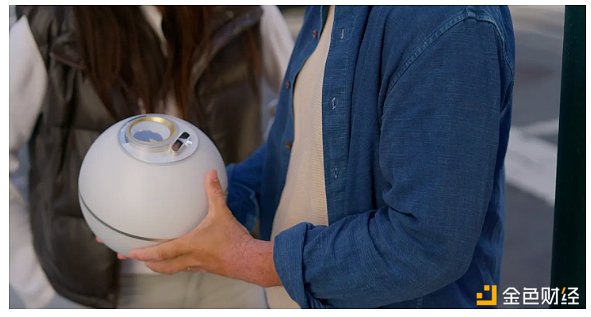Reintroducing World and its connections with major tech companies, while reviewing the upcoming changes disclosed in the latest announcement of the protocol…
Written by: revelointel
Translated by: Shan Ouba, Golden Finance
Cryptocurrency x artificial intelligence is clearly the hottest topic right now, but it is currently combined in the form of memecoins, while the "real" projects built at the intersection of these two trends have received less attention recently. In terms of AI innovation in the cryptocurrency space, Bittensor/$TAO is clearly at the forefront. As we approach the end of 2023, tokens like $RENDER and $IO are gaining interest due to their close ties with cloud computing and Nvidia, but Bittensor has emerged as the leader in this field.
However, one of the highest-valued projects closely related to artificial intelligence may have been forgotten: Worldcoin. The $WLD token of Worldcoin has risen 20% in the past week, making it one of the best-performing tokens among the top 100. Previously, the New World event held in San Francisco showcased some new features.
Aside from market capitalization, the high FDV of $WLD is also one of the highest among all crypto tokens, approximately $23 billion. Some may have forgotten this because Worldcoin has not attracted much attention; in fact, it was recently renamed "World." This simple name change removes the crypto element from the name, reflecting key changes made to the protocol itself that go far beyond the realm of cryptocurrency. This article will reintroduce World and its connections with major tech companies, while reviewing the upcoming changes disclosed in the latest announcement of the protocol…
Background of Worldcoin
In the hype surrounding $GOAT, people may have forgotten about Worldcoin. The launch of this project was highly controversial, as users must scan their retinas to receive tokens. The goal of World is simple and easy to understand. The "moat" or distinguishing feature of the protocol is merely a physical Orb, which has unique capabilities to scan retinas and verify individual identities.

The idea is to use it as a foolproof KYC mechanism through which a completely fair global universal basic income can be distributed. This is where the crypto element comes into play; ideally, users living in developing countries can obtain native $WLD tokens by scanning their retinas.
The project's goals are not complex. Unlike most crypto protocols, the distinction of World from other types of universal basic income projects does not lie in software or marketing, but in the physical Orb and its ability to achieve near-foolproof identity verification, which is rare among such projects from the outset.
Another noteworthy fact about World is that it was co-founded by OpenAI CEO Sam Altman. This, combined with concerns about user privacy and intrusiveness, has led to both positive and negative perceptions of the protocol. Now, the project is receiving more attention for different reasons, namely its renaming to "World," which also aligns with some new initiatives and capabilities.
The Orb is the UBI distribution mechanism that the entire World project relies on, and it will have a 2.0 version that will provide new verification methods. Reports suggest that the launch of the new Orb benefits from advancements in Nvidia's new Jetson chipset. The new Orb is noticeably smaller and can be held in one hand. Additionally, the Orb is easier to produce and deploy in new environments, allowing more people around the world to use it.
World ID V3 has also been released, which reduces the intrusiveness of the verification process. People from certain countries can simply scan their passports on the World app to receive $WLD tokens, even without using a physical Orb for scanning. This is also done in a privacy-preserving manner, as data is only stored on the local user device, and the World Foundation cannot access it, thus addressing privacy concerns surrounding the project. World ID 3.0 also comes equipped with anti-deepfake measures that can be integrated with video conferencing applications to verify identities. This alone is a significant measure; however, it is one of several major announcements made recently.
Another key area of expansion for World is enhancing the World app, specifically by building an app store within the app itself. This will allow the World app to evolve somewhat in the direction of WeChat and Telegram, enabling applications to run within World. The main advantage here is that applications can automatically integrate with World’s $WLD wallet and payment system, as well as access World’s verification. This has the potential to become a very powerful moat, which has more substance than brand recognition and user experience, and is precisely what drives the extensive integration of applications like WeChat.
Last but not least, World Chain was launched this week. This may be the area of World transformation that is of most interest to crypto-native users, but compared to other initiatives, it may be the least significant focus. World Chain is now live, allowing users to access various financial primitives, particularly the onboarding and offboarding of stablecoins.
With over 15 million users, World Chain is currently the chain with the highest DAU. It is widely agreed that the DAU numbers of most chains hardly reflect real users, giving World Chain an advantage. Built on the OP stack, World Chain has set specific chain upgrade goals to expand its capabilities as demand grows. Initially, users' gas fees will be sponsored by the World Foundation, with the long-term goal of subsidizing gas through fees from premium users and bots.
Regardless of any new progress made, there may still be some dissenters who simply disagree with the premise of the World project. In the future, applications and projects in the crypto space may diverge, with some applications and projects bridging the gap between Web2 counterparts, while others remain somewhat "primitive," yet still more permissionless. This describes a crypto landscape that some have predicted the industry will move closer to, where there exists a regulated, more user-friendly crypto alongside an unregulated crypto, both coexisting simultaneously.
免责声明:本文章仅代表作者个人观点,不代表本平台的立场和观点。本文章仅供信息分享,不构成对任何人的任何投资建议。用户与作者之间的任何争议,与本平台无关。如网页中刊载的文章或图片涉及侵权,请提供相关的权利证明和身份证明发送邮件到support@aicoin.com,本平台相关工作人员将会进行核查。




